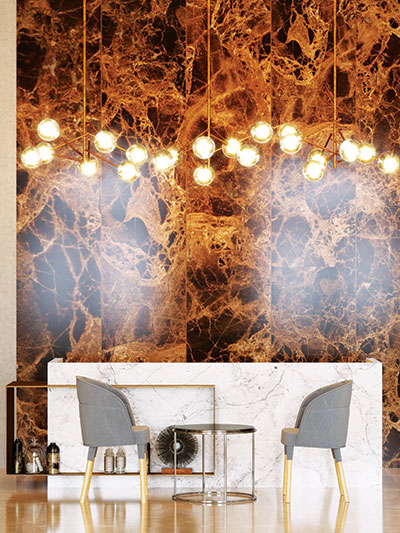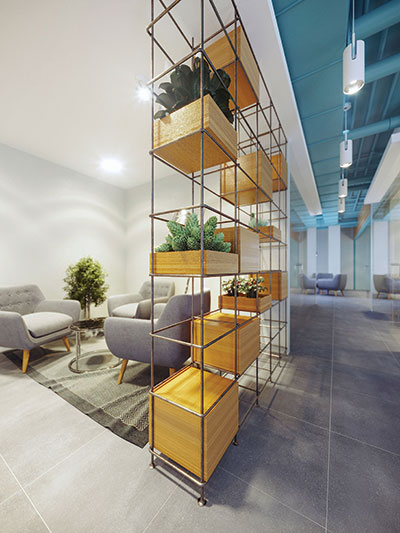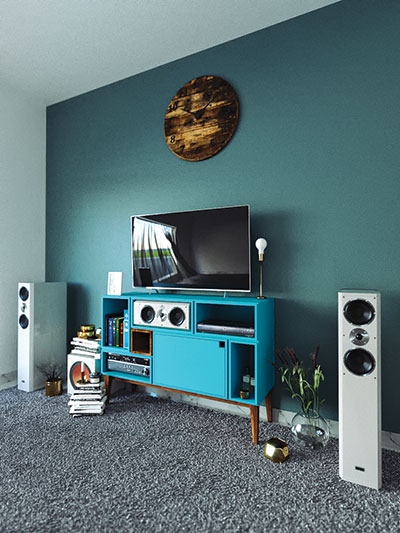Make room for fresh, natural materials in your home design elements to infuse an organic and serene ambience to the space, suggests Zahir Abdul Latheef, Lead Interior Designer of Design District Muscat* as he talks about the trends, challenges and the ways and means to maximise living spaces.
What is trending in the world of architecture and interior design?
Minimalistic designs and Scandinavian furnishing has a great demand around the world. We also see a huge influx of software advancement in design development and presentation. There is a real trend in the US for tiny homes and in Europe, for smart homes and home automation. 3D Printing is also underway and miniature architectural modelling has already begun reaping benefits of it. We expect more applications to be introduced very soon.
We are a big fan of Jan Gehl. He is a Danish architect and urban design consultant based in Copenhagen whose career has focused on improving the quality of urban life by re-orienting city design towards the pedestrian and cyclist. He is a founding partner of Gehl Architects. We were actually astounded to see him coming up with a new project in Muscat because we thought his concepts, though as much as we love it, were too remote to be conceived here. We are excited about “The Mawalih Souk of Life” project and we cannot wait to see it build.
What are the current home design trends in the market? How can they be incorporated realistically in the local market?
The lines between architecture and interiors are blurring. Interior concepts are finding their way into defining the architecture and vice-versa. We are seeing concrete accents, exposed structural steel, random facade and window elements and stacking of floors right above each other, among others. We would love to see clients be more open to such ideas for their houses.
There is also a shift towards fresh, natural materials such as stone, concrete, granite, bronze and copper. These elements will help bring an organic and serene ambience to any space. We have also been visiting nurseries around Muscat to educate ourselves more on the indoor plant collections available here and how they can be sustainably incorporated into our designs.
Furnishing is half the design. The local market is only beginning to mature in terms of designer furniture and the ones that exist are exorbitantly expensive. There is a real opportunity for furnishing companies in Europe, South Asia and elsewhere to confidently spread themselves across the country – if they can offer competitive pricing. The furnishing industry is huge in UAE but, unfortunately, we don’t have many options available here in Muscat. Even the companies here collect orders and then import them from UAE. We are constrained by local availability, as much as we suffer from low budgets. We should strive to create self-sufficient furniture and finishes economy right here in Muscat.
With homes shrinking in size owing to the rising cost of real estate, what would you suggest to maximise space and make small spaces work?
Design, design and design. Small spaces demand more attention to every small detail because they are much more significant now. More importance should be given to space planning.
Maximise continuous spaces and limit walls. Join the dining and living rooms and, if possible, the kitchen too. Eliminate unnecessary walkways, corridors and circulation spaces and narrow down to what is most important. In that way, you can opt for larger living rooms, bedrooms, kitchens and bathrooms, in return for smaller public areas, while staying small. The very tactic of weeding out unwanted circulation spaces and stagnant corners can release a lot of space either to cut down or incorporate into primary rooms. Stay with the neutral tone for paints and restrict the wooden elements to one or two grains or stains.
In an ideal case, I would recommend using only half the house’s plot and using those savings to employ high-end furnishing, lighting, and fittings. Convert the remaining half into a backyard garden.
What are the opportunities and challenges for designers in Oman?
We discover a new interior design or architecture company opening in Muscat almost every month, which is a good trend. The general shift towards well-designed spaces is on the increase and more and more individuals and companies are poised to make their projects significant. As Oman is still warming up to the design scene, opportunities will always be on the rise. We also have a lot of new malls populating the retail, entertainment and F&B segments.
The opportunities in the commercial interior sector will definitely flourish. But we have quite a lot of concern in the residential sector, as we find more and more experienced designers dodging residential projects for many reasons. Residential projects bring in long time frames (from 6 months to 2 years), as they are projects for a lifetime for the client. At the same time, they wouldn’t necessarily have the budgets to sustain a designer until the end. Secondly, it’s the revisions: residential designs will have to be revised at least four times in comparison to an average commercial project. All of these contribute to a difficult practice when operating on residential interiors.
When designing or decorating a home, what are the important factors one must consider to ensure that it reflects the personalities of the members?
In my opinion, it shouldn’t be a factor at all in designing a home. Importance should be given to the personality of the living and breathing space that we are going to create. Try and incorporate universals as much as possible; like being open, spacious, welcoming with lots of light and enthusiasm. Have respect for the night: design low-key lighting for the interiors and facades. Avoid ceiling and direct lights as much as possible. Try to create drama with accent lighting and ingenious colouring combinations.
What role has technology played in enhancing the interior décor/design?
We owe a lot to the various software companies for all the powerful applications we use every day to create, visualise, detail and construct every project. The time of hand-rendering is long gone, though we use hand-sketching for initial concept preparation.
We use VR sets like Oculus to place the client directly inside the rendered space and make them experience for themselves what we have designed. Rendering and animation software like Lumion is pushing the boundaries of architectural presentation and are taking them to a new level. A bit of cinematic expertise can turn those animations into a movie-like experience.
What would you advise people looking to modernise their living spaces?
I would always advise them to embrace openness and being empty. It isn’t necessary always to fill up space. It’s not a lot of things that add up to a beautiful room, but a small collection of meaningful furniture and finishes.
And when you get down to modernising, it needs to be done as a whole. Simply replacing furniture while keeping the old ceiling and patterned tiles would yield no results. Remember, if you use many existing items in your makeover, it will look as it is even after the makeover.
What is sustainable interior design?
In simplest terms, a sustainable interior design should be composed of well-designed spaces, high-quality materials, durable furnishing and lasting finishes.
Interior design/décor dos and don’ts to observe while planning a spring/summer home makeover:
Dos:
- Always hire an interior design consultant to build or renovate your home.
- Pay for your design; if you get it for free, know that it’s only worth so much.
- Have sufficient funds for the design and fit-out; good interiors on a budget don’t work.
- Know the difference between an interior designer and a decorator. They are not the same. Interior design is the art and science of understanding people’s behaviour to create functional spaces within a building. The decoration is the furnishing or adorning of a space with fashionable or beautiful things. In short, interior designers may decorate, but decorators do not design.
Don’ts:
- Don’t believe the myth of DYI in areas of interior design. It’s more complex than one usually thinks.
- Give your requirements and expectations to the designer; don’t force your ideas on him/her.
- Don’t create a cove light feature in your next ceiling. We have had it too much and it’s time that we get rid of it. Many designers have invested a lot of time making them a little different from one another, and in the pursuit, have lost much or all of its charm. We have stopped doing it on our projects. It’s now time for alternatives.
Here are some Home Décor ideas that you can implement easily





